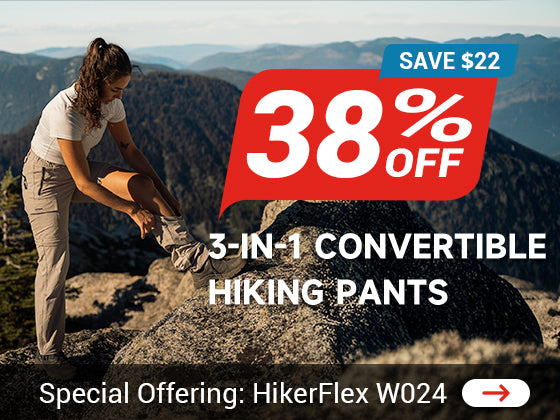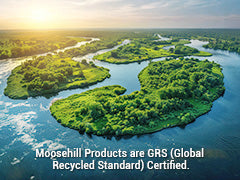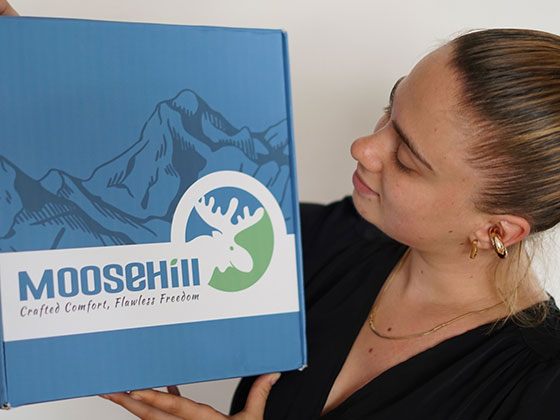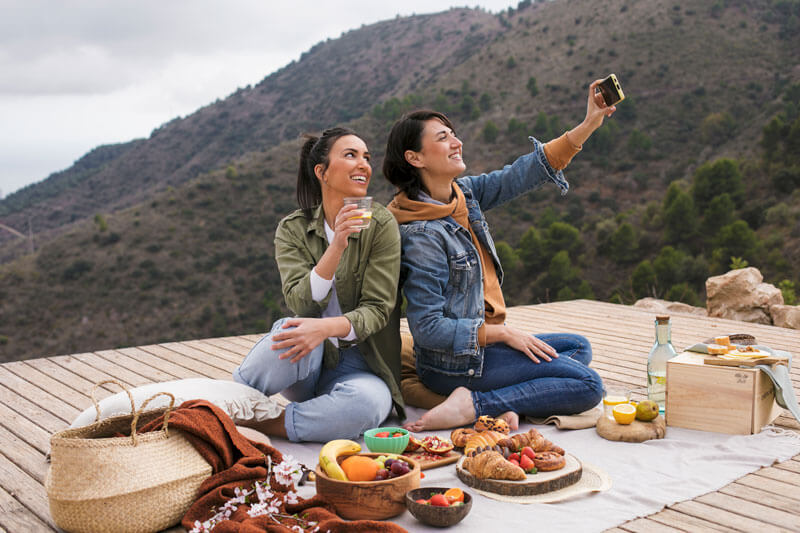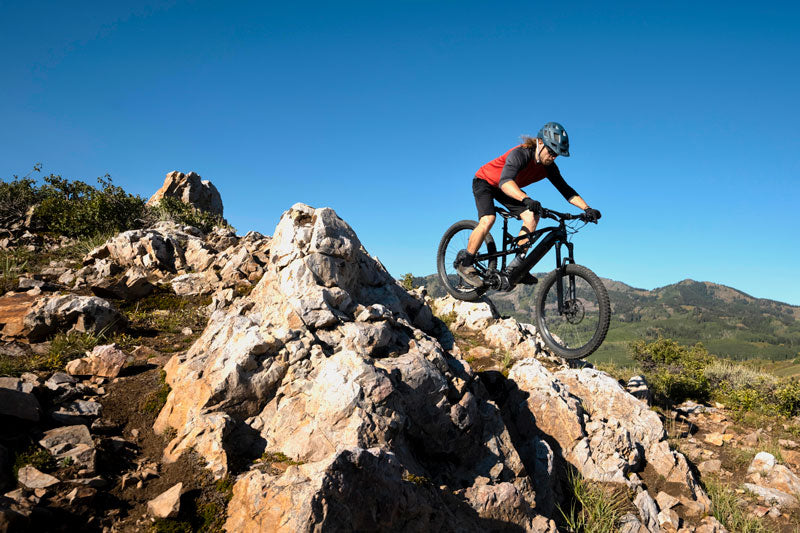LNT Legge nella Natura
Che cos'è la legge LNT?
LeaveNoTrace (LNT) è una campagna educativa e promozionale a livello nazionale avviata dalle agenzie governative statunitensi per la gestione delle terre a tutti i livelli, studiosi di educazione ambientale, gruppi di conservazione, produttori e distributori di attrezzature per attività all'aperto, gruppi di escursionismo e il pubblico in generale. Queste organizzazioni pubblico-private, industria-governo-accademia collaborano insieme dagli anni '80 per sviluppare il concetto di "Turismo Senza Tracce" e promuovere il "Turismo di Qualità Responsabile". Insegnare al pubblico i concetti e le tecniche corrette per trattare l'ambiente e contribuire a ridurre l'impatto delle attività ricreative sulla natura ha portato a risultati positivi nel corso degli anni.
Contesto sulla legge LNT:

Dal 1965 al 1994, la popolazione all'aperto è cresciuta sei volte, e i sondaggi condotti dalla Outward Bound School hanno mostrato che nel 1965, 9,9 milioni di americani erano impegnati in attività di escursionismo, e nel 1977 quel numero era aumentato a 28 milioni. I laghi alpini erano inquinati dalle emissioni umane, alcuni sentieri erano erosi fino al ginocchio, i campeggi erano privi di erba, e rifiuti di tutte le dimensioni potevano spesso essere trovati, un fenomeno che metteva i gestori del territorio in un dilemma mentre cercavano di soddisfare le esigenze dei turisti cercando di preservare l'ambiente naturale.
Negli inizi degli anni '80, il programma iniziale LNT del Servizio Forestale iniziò a essere riferito ad altri programmi all'aperto. Mentre la chiusura di alcune aree sovrasfruttate, i controlli della capacità di carico e la limitazione di specifici campeggi divennero strumenti di gestione importanti per i gestori del territorio, l'educazione ambientale dei visitatori si rivelò in realtà una soluzione più efficace. Negli inizi degli anni '80 c'erano innumerevoli programmi di educazione ambientale insegnati nelle unità di gestione del territorio, con slogan come "Ciò che porti su per la montagna, lo porti giù per la montagna," "Cammina leggero sulla terra," "Prendi solo fotografie e lascia solo impronte," e molti altri. Slogan come "Se porti qualcosa su per la collina, portalo giù per la collina," "Cammina leggero," e "Prendi solo fotografie, lascia solo impronte" sono familiari a molti escursionisti. Nel 1994, l'organizzazione no-profit con sede a Boulder, Colorado, LeaveNoTrace, Inc. era responsabile del coordinamento di tutte le unità LNT, della concessione di licenze e degli sforzi di raccolta fondi.
Elementi chiave della Legge LNT:
1. Pianifica e preparati in anticipo

Qualsiasi attività all'aperto deve essere pianificata e preparata in anticipo, comprendere le regole e i regolamenti sulla protezione ambientale in quel momento, fare preparazioni sufficienti per situazioni possibili e scegliere l'attrezzatura applicabile in base alla situazione compresa. Allo stesso tempo, è necessario comprendere appieno le caratteristiche del percorso nell'area dell'attività e progettare di conseguenza il percorso e il campo. Pianificare la quantità di cibo da portare in base alla situazione reale del percorso e poi effettuare un trattamento semplice del cibo, cercando di centralizzare il confezionamento se può essere disimballato, in modo da ridurre al minimo la generazione di rifiuti il più possibile. In breve, la pianificazione e la preparazione anticipata devono essere effettuate in modo tale da non essere cieche, illegali, sprecone e ben preparate.
2. Viaggiare e campeggiare su terreni tollerabili
Nelle attività all'aperto, a volte tendiamo a scegliere percorsi di taglio non organizzati per accorciare la distanza e la difficoltà, il che non è auspicabile. La legge LNT stabilisce che ogni volta e ovunque sia possibile, camminare sui sentieri esistenti, niente scorciatoie, niente salite e discese dirette, e il gruppo seguirà solo un percorso durante il viaggio. Se la strada è in buone condizioni e allo stesso tempo il carico non è troppo pesante, considera di indossare scarpe con suola morbida per ridurre al minimo l'impatto sul terreno.
Quando si cammina su sentieri non escursionistici, scegliere aree come affioramenti rocciosi o pendii di detriti che possano sopportare il traffico pedonale. In tali aree, disperdersi è il modo migliore per ridurre al minimo l'impatto sull'ambiente.

Nelle attività di campeggio in cui l'impatto ambientale è elevato, la scelta dei campeggi è molto importante e generalmente richiediamo che i campeggi siano situati a più di 50 metri da una fonte d'acqua per escludere inquinanti. Su percorsi popolari, campeggiare solo in campeggi esistenti con un terreno duro, concentrando le attività di campeggio su aree già impattate. Se ci si trova in un'area con poca attività umana, allestire il campo in un sito che non è mai stato utilizzato, piuttosto che in un sito leggermente impattato. Allestire il campo in un campeggio esistente che presenta segni visibili di campeggi esistenti, che a volte mostrano segni di accensione di fuochi. Se si tratta di un campeggio molto utilizzato, con terreno fortemente eroso e radici degli alberi esposte, è importante sia scegliere un altro posto per campeggiare sia dare un riposo al campeggio.
I luoghi più adatti per il campeggio sono aree rocciose, ghiaiose e sabbiose, poiché sono molto resistenti al calpestio umano; altre buone scelte sono i campi di fieno, mentre le aree boschive con abbondante vegetazione e una superficie fogliosa sono meno resistenti all'impatto umano.
3. Smaltire i rifiuti correttamente
"Porta ciò che porti su per la montagna fino in fondo alla montagna" è un principio importante. Mantenere il campeggio nel suo stato originale riflette la qualità più basilare di un campeggiatore. Lo smaltimento delle feci, che può essere sepolto in un buco per gatti profondo 10-20 centimetri e ad almeno 60 metri da una fonte d'acqua, da un campeggio o da un sentiero, è accettato. Pensando attentamente alla carta igienica, la natura offre molti modi per essere più gentili con l'ambiente, e se devi usare la carta igienica, devi portarla giù per la montagna, il che è necessario per attirare la nostra attenzione.

Quando si tratta di rifiuti alimentari, cerchiamo di ridurre al minimo l'imballaggio prima di partire, scegliendo anche di utilizzare posate riutilizzabili ogni volta che è possibile, pianificando la giusta quantità per evitare sprechi. Durante le attività di campeggio, utilizzare il minor numero possibile di prodotti per la pulizia, non lavarsi mai il viso, non lavarsi i denti, non lavare i vestiti o le verdure direttamente nella fonte d'acqua, e versare le acque reflue in una fossa di terra che si trova a più di 50 metri dal campeggio e dalla fonte d'acqua, e profonda 25-30 CM. I residui alimentari devono essere portati via completamente, anche alcuni alimenti biodegradabili come i semi e le bucce della frutta devono essere portati via completamente.
Durante lo smaltimento delle feci, dovrebbero essere costruiti bagni temporanei durante le attività di campeggio e dovrebbero essere scavati fossati per coprire le feci. La posizione dei bagni dovrebbe essere scelta a 60 metri di distanza da fonti d'acqua, campeggi e strade. Per evitare inquinamento secondario, la carta igienica utilizzata dovrebbe essere imballata e portata via il più possibile, non sepolta o bruciata.
Lascia un campeggio pulito e porta giù dalla montagna tutta la tua spazzatura, insieme alla spazzatura lasciata da altri. Metti tutta la tua spazzatura in un unico sacchetto. Indossa scarpe più leggere con suole piatte e più morbide, come sandali sportivi o scarpe da jogging, mentre sei in campeggio per ridurre l'impatto di calpestare il terreno, e le tende leggere hanno un impatto minore rispetto alle tende in tela tradizionali. Quando lasci un campeggio in un'area primitiva, rinfresca l'erba; riempi i buchi lasciati dai picchetti da campeggio.
4. Mantenere la natura così com'è
Restituisci la natura a se stessa. Quando siamo nel campeggio, dovremmo scegliere di indossare scarpe più leggere con suole piatte e più morbide, come sandali, infradito o scarpe da jogging, per ridurre al minimo l'impatto di calpestare il terreno. Quando ci si imbatte in impronte culturali e storiche, sculture fatte dall'uomo, edifici, ecc., non si dovrebbe toccarli senza permesso, tanto meno calpestarli. A volte, durante le nostre attività, troviamo alcuni membri del team che raccolgono fiori e piante, scalano le alte pareti della roccia, il che non è auspicabile e dovrebbe essere fermato. Quando si costruiscono campeggi, si deve anche prestare attenzione a non scavare fossati, cambiare il corso di torrenti e fiumi, e quando si parte ripristinare il campeggio a un punto in cui possa attrarre i campeggiatori successivi, per raggiungere l'obiettivo di non danneggiare in modo significativo altre superfici.
5. Incendio in natura
Non usare il fuoco nelle attività all'aperto, in generale il fuoco è un grande shock per l'ambiente naturale, dopo un incendio le sue tracce diventano sempre più grandi e non scompaiono mai, i danni permanenti causati dal fuoco al suolo possono essere profondi fino a 10 centimetri, quindi nelle attività all'aperto, usa un fornello adeguato per cucinare, indossa abbastanza vestiti per proteggerti dal freddo, usa una tenda e un buon sacco a pelo per rimanere caldo e asciutto, e non usare facilmente il fuoco.
Nel caso in cui tu debba usare legna da ardere, prima determina se è consentito dove ti trovi, se è stagione di incendi, e assicurati di trovare legna caduta per il combustibile piuttosto che raccogliere alberi vivi; il combustibile ideale è un ramo più sottile del tuo polso. Quando accendi un fuoco, scegli di costruirlo in un'area centrale dove ci sono segni di un fuoco, e spargi le ceneri nell'erba dopo che la legna è bruciata completamente.
Nelle attività all'aperto, non sosteniamo il fumo; oltre al danno "tossico" causato dal tabacco stesso, i suoi mozziconi sono fatti di plastica acetato, che non è biodegradabile, e i mozziconi di sigaretta usati contengono anche piombo, mercurio, arsenico, acetone, cloruro di vinile, formaldeide e cianuro di idrogeno nel fumo. Anche se devi fumare, devi stare lontano dai tuoi compagni di squadra per evitare inquinamento secondario, e i mozziconi di sigaretta devono essere centralizzati con i rifiuti e portati giù dalla montagna.
6. Rispettare la fauna selvatica
Nelle attività all'aperto, dovremmo rispettare le abitudini e l'ambiente della fauna selvatica e raggiungere una pacifica coesistenza con essa. Prestare attenzione alla protezione dell'acqua, la protezione degli animali dipende dalla fonte di sopravvivenza; che tu veda o meno la fauna selvatica, dovresti sapere che la tua breve visita non può evitare di influenzare la fauna selvatica locale. Quando campeggi non lontano dalla fonte d'acqua, cerca di andare e tornare alla fonte d'acqua solo una volta, per ridurre al minimo l'interferenza con la fauna selvatica, portando sacche d'acqua pieghevoli riempite d'acqua, piuttosto che tornare avanti e indietro con pentole e padelle cariche d'acqua. In questo modo, si va e si torna alla fonte d'acqua solo una volta, riducendo l'interferenza con gli animali, per minimizzare il disturbo agli animali.
Inoltre, non dare mai da mangiare agli animali selvatici, non importa quanto siano carini, non dovrebbero essere nutriti liberamente, sono questi animali selvatici a soffrire una volta che perdono la loro capacità di sopravvivere. Al campeggio, metti tutto il cibo e gli attrattivi in un luogo sicuro per evitare che la fauna selvatica locale si abitui a visitare il campeggio.
Osserva da lontano, evita di nutrire e coesisti pacificamente con la fauna selvatica.
7. Considera le altre persone nel campo
Prima di iniziare attività all'aperto, dovresti comprendere appieno le usanze locali, rispettare le usanze etniche locali, rispettare le abitudini e le consuetudini di vita degli altri e sviluppare buone abitudini. Non disturbare gli altri intrattenendo nell'area campeggio, minimizza i rumori e le distrazioni visive, e fai tutto ciò che puoi pensare per mantenere la natura e il campeggio tranquilli, poiché questo è il motivo per cui la maggior parte degli appassionati di attività all'aperto è vicina alla natura.
Rispetta e prendersi cura della natura e mantenere l'equilibrio ecologico è responsabilità di noi appassionati di attività all'aperto. Sia in città che all'aperto, dovremmo promuovere la protezione ambientale, partire da noi stessi, influenzare gli altri attraverso le nostre azioni e diffondere il concetto corretto di protezione ambientale, affinché i nostri figli e nipoti possano godere del cielo blu e dell'acqua verde.
Per attività all'aperto, non lasciare altro che impronte; non prendere altro che foto e aria fresca!
--- FINE ---
Per ulteriori dettagli su Abbigliamento da trekking , per favore clicca Qui scegliere i prodotti più adatti!

【Consigli per l'escursionismo】
· Le Regole d'Oro per l'Escursionismo nel 2024
· Consigli per escursionisti principianti
· I 7 errori più comuni quando si fa escursionismo
【Consigli per andare in bici】
· Che pantaloni corti indossano i ciclisti di montagna?
· Perché i pantaloni da mountain bike sono imbottiti invece del sedile?
· Confortevoli e alla moda: 5 consigli da esperti per i pantaloni da bici
【Consigli per il golf】
· Indossi Pantaloni o Pantaloni Corti per Giocare a Golf?
· Guida Veloce: Scegliere i Pantaloni da Golf Perfetti
· 4 Consigli per Scegliere Efficientemente i Tuoi Abbigliamenti e Accessori da Golf
【Consigli per sci e neve】
· Quali pantaloni sono buoni per la neve
· I pantaloni da neve possono essere usati come pantaloni da pioggia?


